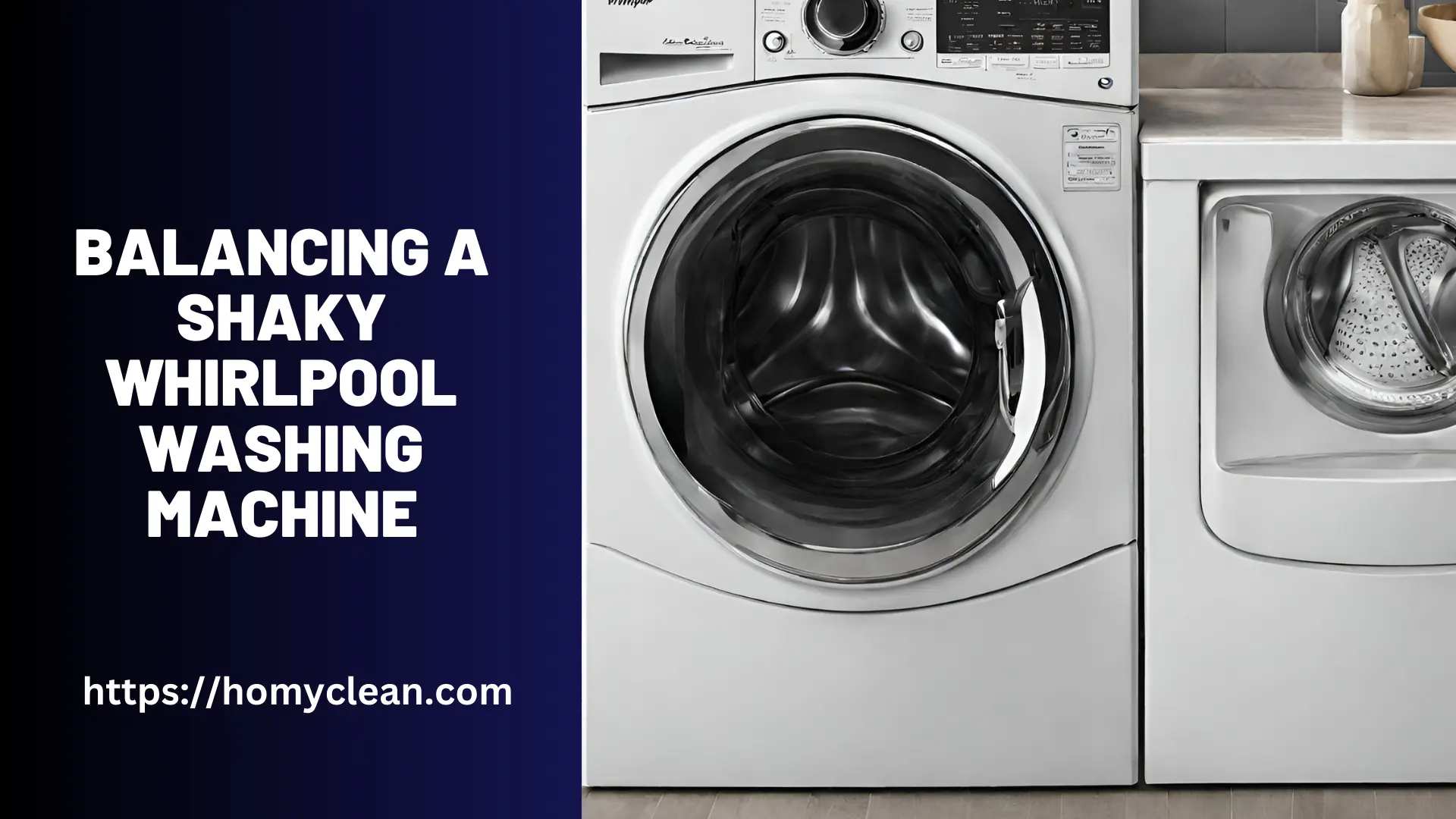Are you tired of the constant rattle and shake of your Whirlpool washing machine? It can be incredibly frustrating, not to mention potentially damaging to your appliance and your home. The good news is that you don’t have to put up with it. In this comprehensive guide, we’ll show you how to balance a shaky Whirlpool washing machine, ensuring smooth laundry cycles.
Washing machines are essential appliances in our daily lives, but when they shake, they can spin a routine chore into a disruptive event. The good news is that fixing this problem doesn’t always require a professional technician. With a bit of guidance and some easy-to-follow steps, you can bring back the peace to your laundry room.
Why Does Your Whirlpool Washing Machine Shake?
Before we delve into the solution, it’s essential to understand why your Whirlpool washing machine might shake in the first place. Several factors can contribute to this common issue. Here are some of the most common reasons:
1. Uneven Load: Overloading your washing machine or having an imbalanced load can lead to excessive vibration.
2. Uneven Surface: Placing your washing machine on an uneven floor or surface can cause it to wobble during operation.
3. Damaged or Worn Parts: Over time, the drum, suspension springs, or shock absorbers may become damaged, resulting in increased shaking.
4. Leveling Issues: If your washing machine isn’t level, it’s more likely to shake during the spin cycle.
5. Excessive Spin Speed: Some settings on your washing machine may lead to higher spin speeds, causing more vibration.
Now that you know the culprits, let’s dive into the step-by-step guide on how to balance your shaky Whirlpool washing machine.
How to Balance a Shaky Whirlpool Washing Machine
Step 1: Prepare Your Washing Machine
You should unplug and disconnect your washing machine from the power source for safety reasons as the first step. Then, pull the machine away from the wall to access the rear.
Step 2: Adjust the Feet
Check if the feet of your washing machine are adjustable. Most Whirlpool washing machines have adjustable feet to help you level the machine. Use a wrench or pliers to turn the feet, leveling the appliance from side to side to back.
Step 3: Use a Level
Place a level on top of your washing machine. It should be level both from side to side and from front to back. If it’s not, continue adjusting the feet until the bubble in the level sits between the lines.
Step 4: Check the Load
Make sure you disperse your laundry load inside the drum. An uneven load can cause excessive shaking during the spin cycle. Rearrange the items if necessary.
Step 5: Check for Damaged Parts
Inspect your washing machine for any visibly damaged or worn parts, such as suspension springs, shock absorbers, or the drum itself. If you find any issues, it’s advisable to replace them.
Step 6: Test the Machine
Plug your washing machine back in and run a test cycle. If it’s still shaking, try reducing the spin speed or redistributing the load until it operates smoothly.
Step 7: Final Adjustments
If the issue persists, repeat the leveling process and check for any other issues. Sometimes, it may take a few attempts to get it just right.
With these steps, you should be able to balance your shaky Whirlpool washing machine and enjoy quieter laundry days.
People Also Visit:
- Whirlpool Duet washer bearing Kit
- Whirlpool washer agitator not moving but
- How to Fix Leaking Whirlpool Washer
Frequently Asked Questions
1. Why is my Whirlpool washing machine shaking violently?
If your washing machine is shaking violently, it’s likely because of an uneven load, an uneven surface, or damaged parts. Follow the steps in this guide to address these issues.
2. Can I use a regular level to check the machine’s balance?
Yes, a regular spirit level can help you determine if your washing machine is level. It’s a handy tool for this task.
3. What should I do if my washing machine still shakes after leveling it?
If your washing machine still shakes after leveling it, check the load and the condition of the parts. Adjust the load and replace damaged parts if necessary.
4. Are there specific tools I need for this task?
You’ll need a wrench or pliers to adjust the machine’s feet and a level to check its balance. These are the primary tools required.
5. How often should I check my washing machine’s balance?
It’s a good practice to check your washing machine’s balance periodically, especially if you notice any shaking or rattling during cycles.
6. Can I fix a damaged drum myself?
Fixing a damaged drum may be a more complicated task and could require professional help. Check your warranty and consider calling in a technician.
7. What’s the ideal spin speed for my washing machine?
The ideal spin speed can vary depending on the type of laundry you’re washing. Consult your appliance manual for recommendations.
8. Can I place my washing machine on a carpeted floor?
Placing your washing machine on a carpeted floor can make it more prone to shaking. It’s best to put it on a hard, level surface.
9. How do I prevent future imbalances in my washing machine?
To prevent future imbalances, make sure to load your washing machine evenly and regularly check for damaged parts or loose components.
10. Can a shaky washing machine cause damage to my plumbing or home structure?
While rare, excessive shaking can potentially lead to issues with plumbing or home structure. It’s best to address the problem as soon as possible to avoid such complications.
Real-Life Example
Imagine you’re in a hurry to get your laundry done. You load up your Whirlpool washing machine, press the start button, and suddenly, the whole room starts shaking as if an earthquake has hit. It’s not only frustrating but also a little frightening. You don’t want your appliance to break, and you certainly don’t want to deal with the noise. This is precisely the kind of situation where knowing how to balance your washing machine can save the day.
Conclusion
Balancing a shaky Whirlpool washing machine doesn’t have to be a daunting task. With a bit of patience and the right techniques, you can restore peace and quiet to your laundry room. By following the steps outlined in this guide, you’ll be able to tackle this common issue with confidence. Say goodbye to the annoying vibrations, and enjoy smooth, silent laundry cycles once again.
Remember, regular maintenance and periodic checks can help prevent imbalances in the future, ensuring your washing machine stays in good working condition. So, don’t let a shaky washing machine disrupt your daily routine—take action and balance it today!





